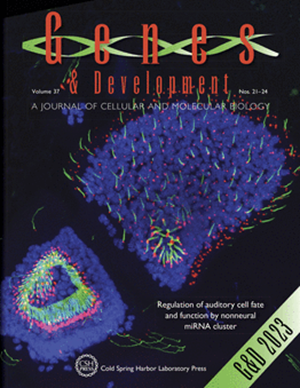Telomeres at the nexus of aging, tumor suppression, and inflammation: toward an understanding beyond senescence
IF 7.7
1区 生物学
Q1 CELL BIOLOGY
引用次数: 0
Abstract
Aging is the greatest risk factor for most diseases. We propose that aging manifests as disease as a function of tumor-suppressive capabilities. Adequate tumor suppression results in cell death or an accumulation of damaged cells leading to inflammation and tissue dysfunction that underlies diseases such as cardiovascular disease, neurodegenerative diseases, or type 2 diabetes. Conversely, inadequate tumor suppression leads to cancer. Telomeres are central to this process because they oppose hyperproliferation that is required for cancer initiation by enforcing two potent tumor suppressor mechanisms: senescence and crisis. Although senescent cells promote age-related diseases via inflammatory signaling, crisis cells have lost the p53 and RB pathways, have more unstable genomes, and harbor shorter telomeres, all of which could increase inflammation to a greater degree than is seen in senescence. This model emphasizes the intimate relationship between aging, telomeres, tumor suppression, and inflammation and suggests that crisis cells may represent an unexplored driver of inflammation in advanced age.端粒在衰老、肿瘤抑制和炎症的关系:走向超越衰老的理解
衰老是大多数疾病的最大危险因素。我们提出,衰老作为肿瘤抑制能力的功能表现为疾病。充分的肿瘤抑制会导致细胞死亡或受损细胞的积累,导致炎症和组织功能障碍,这是心血管疾病、神经退行性疾病或2型糖尿病等疾病的基础。相反,肿瘤抑制不足会导致癌症。端粒是这个过程的核心,因为它们通过执行两种有效的肿瘤抑制机制:衰老和危机,来对抗癌症起始所需的过度增殖。尽管衰老细胞通过炎症信号促进与年龄相关的疾病,但危机细胞失去了p53和RB通路,基因组更不稳定,端粒更短,所有这些都可能比衰老细胞更严重地增加炎症。该模型强调衰老、端粒、肿瘤抑制和炎症之间的密切关系,并表明危机细胞可能代表了一种未被探索的老年炎症驱动因素。
本文章由计算机程序翻译,如有差异,请以英文原文为准。
求助全文
约1分钟内获得全文
求助全文
来源期刊

Genes & development
生物-发育生物学
CiteScore
17.50
自引率
1.90%
发文量
71
审稿时长
3-6 weeks
期刊介绍:
Genes & Development is a research journal published in association with The Genetics Society. It publishes high-quality research papers in the areas of molecular biology, molecular genetics, and related fields. The journal features various research formats including Research papers, short Research Communications, and Resource/Methodology papers.
Genes & Development has gained recognition and is considered as one of the Top Five Research Journals in the field of Molecular Biology and Genetics. It has an impressive Impact Factor of 12.89. The journal is ranked #2 among Developmental Biology research journals, #5 in Genetics and Heredity, and is among the Top 20 in Cell Biology (according to ISI Journal Citation Reports®, 2021).
 求助内容:
求助内容: 应助结果提醒方式:
应助结果提醒方式:


